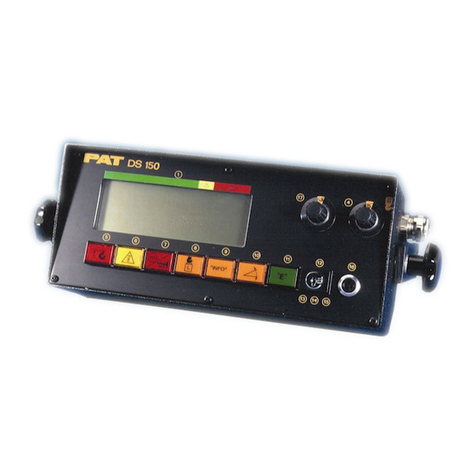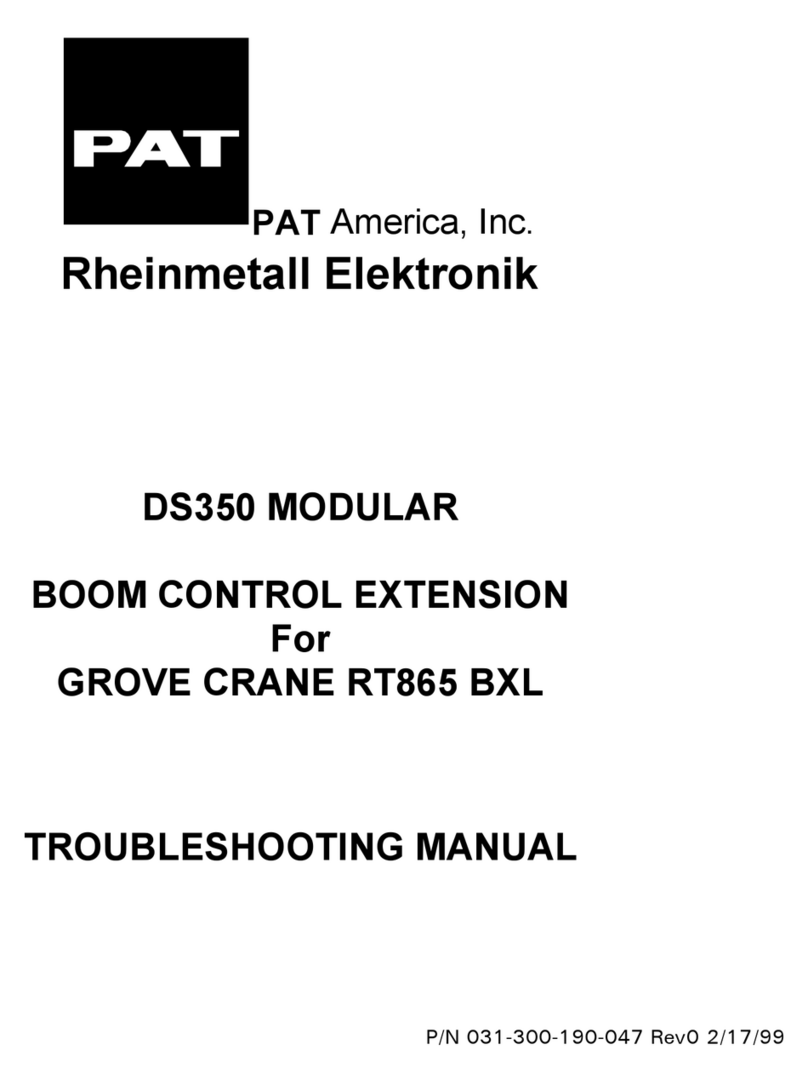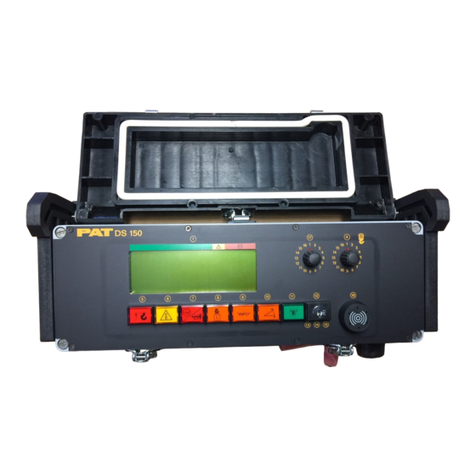
The RCL can only work correctly, if all adjustments have been properly set. For correct
adjustment, the operator has to answer thoroughly and correctly all questions asked during
the setup procedure in accordance with the real rigging state of the crane. To prevent
material damage and serious or even fatal accidents, the correct adjustment of the RCL has to
be ensured before starting the crane operation.
1 GENERAL INFORMATION
The PAT Rated Capacity Limiter (RCL) DS 350 has been designed to provide the crane operator
with the essential information required to operate the machine within its design parameters.
Using different sensing devices, the Rated Capacity Limiter monitors various crane functions and
provides the operator with a continuous reading of the crane’s capacity. The readings
continuously change as the crane moves through the motions needed to make the lift.
The RCL provides the operator with information regarding the angle of the boom, working
radius, rated load and the total calculated weight being lifted by the crane.
If non permitted conditions are approached, the DS 350 Rated Capacity Limiter will warn the
operator by sounding an audible alarm, lighting a warning light and locking out those functions
that may aggravate the crane’s condition.
2 WARNINGS
The RCL is an operational aid that warns a crane operator of approaching overload conditions and
of over hoist conditions that could cause damage to equipment and personnel.
The device is not, and shall not, be a substitute for good operator judgment, experience and use
of accepted safe crane operating procedures.
The responsibility for the safe crane operation shall remain with the crane operator who shall
ensure that all warnings and instructions supplied are fully understood and observed.
Prior to operating the crane, the operator must carefully and thoroughly read and understand the
information in this manual to ensure that he knows the operation and limitations of indicator and
crane.
Proper functioning depends upon proper daily inspection and observance of the operating instructions
set forth in this manual. Refer to Section 6. Pre-Operation Inspection and Calibration Verification of
this handbook.






























